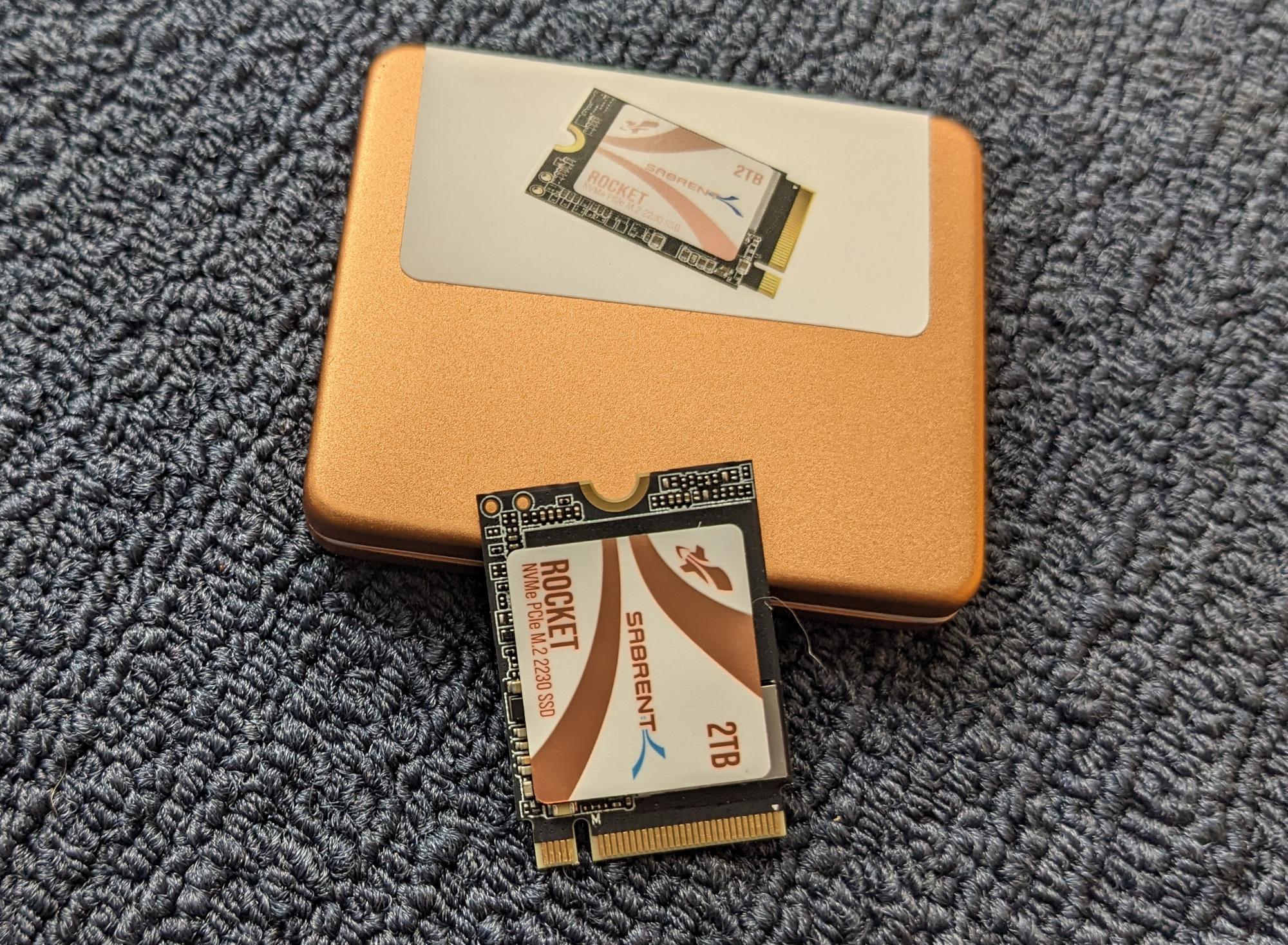 At a glance
At a glanceExpert's Rating
Pros
- Small 2230 form factor for handheld gaming rigs
- Up to 2TB of capacity
- Very good real-world performance
- 5-year warranty and good TBW ratings
Cons
- Slow writes when secondary cache is exhausted
- Requires host memory buffer support (HMB)
Our Verdict
Though a tad pricey, WD’s Black SN770M 2230 M.2 SSD delivers very good performance and is available up to 2TB in capacity. That means twice as many games on your handheld gaming device than with most other 2230 SSDs.
Best Prices Today: WD Black SN770M
It’s been almost two years since we tested the full-sized, 2280 (22mm wide, 80mm long) WD Black SN770. WD just released the far shorter 2230 (30mm long) SN770M, which is meant as an upgrade for your Steam Deck, Asus ROG Ally, and other handheld gaming PCs.

Performance- and component-wise, there turned out to be little different between the SN770M and the SN770, and pricing isn’t all that different either.
What are the WD Black SN770M’s features?
As to the technologies on board, the SN770M is an M.2, PCIe 4.0 x4 (four lane) drive, utilizing an in-house Sandisk controller and the same 112-layer Sandisk-labeled TLC NAND as in the SN770.
Note that the Steam Deck is PCIe 3.0 (the ROG Ally is 4.0). PCIe 4.0/5.0 SSDs are backwards compatible, though sequential performance will be limited to around 3.5GBps.
The SN770M is a DRAM-less, (HMB/host memory buffer) design. That means for top write performance, the device in which you install the SN770M must support the technology and offer up some of its memory for caching duties.
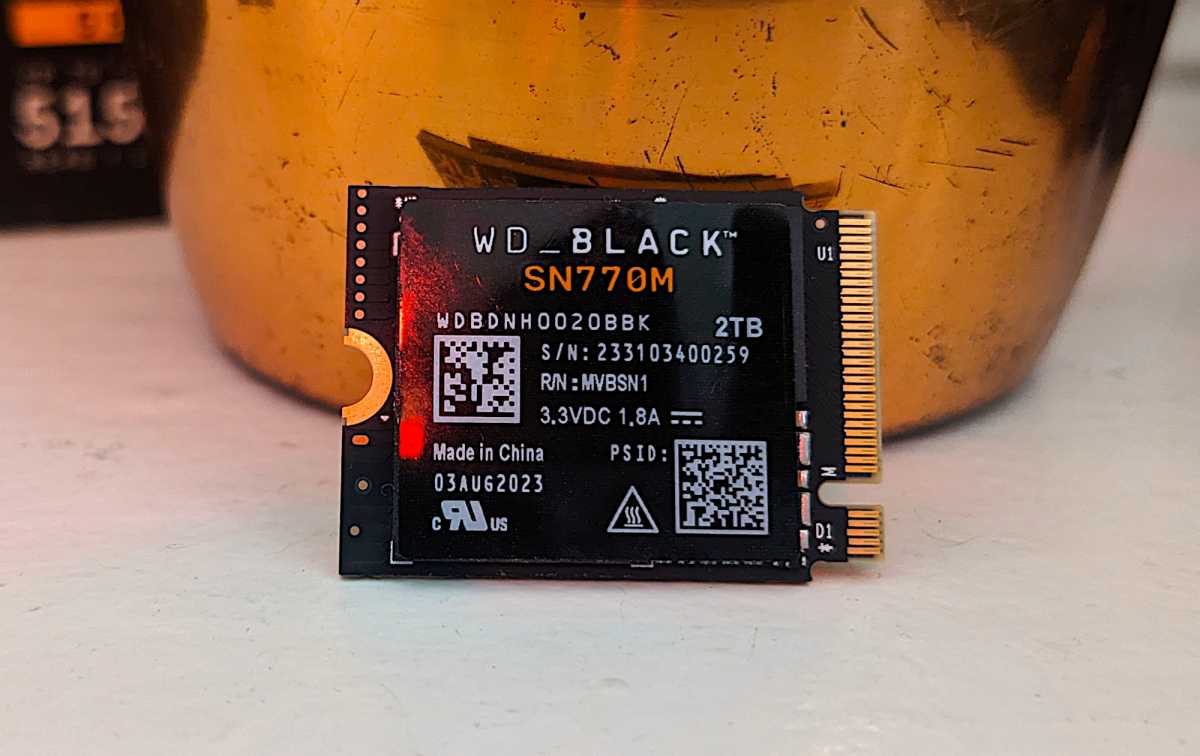
Jon L. Jacobi / Foundry
WD provides a five-year warranty for the Black SN770M and rates it for 300TBW (terabytes that may be written over the life of the drive) per 500GB. That rating is par for the course, though not up to what you’ll get from Seagate, Kingston, or Lexar.
How much does the WD Black SN770M cost?
At the time of this writing, the SN770M was available in 500GB/$80 (£71), 1TB/$120 (£104), and 2TB/$220 (£199) flavors. Not bargain basement, but generally on par for smaller “specialty” 2230 SSDs. That said, the Sabrent Rocket Q4 (2230) was a bit cheaper at the time of this writing.
How fast is the WD Black SN770M?
Faster in some tests, slower in others, overall the SN770M performed on par with its SN770 predecessor. The only exception was the 450GB write, where being a 2TB drive, the SN770M never ran out of secondary cache (3-bit TLC written as 1-bit SLC) as the SN770 did.
In CrystalDiskMark 8’s sequential tests, the the two WDs scored very similarly — well within the margin of error.
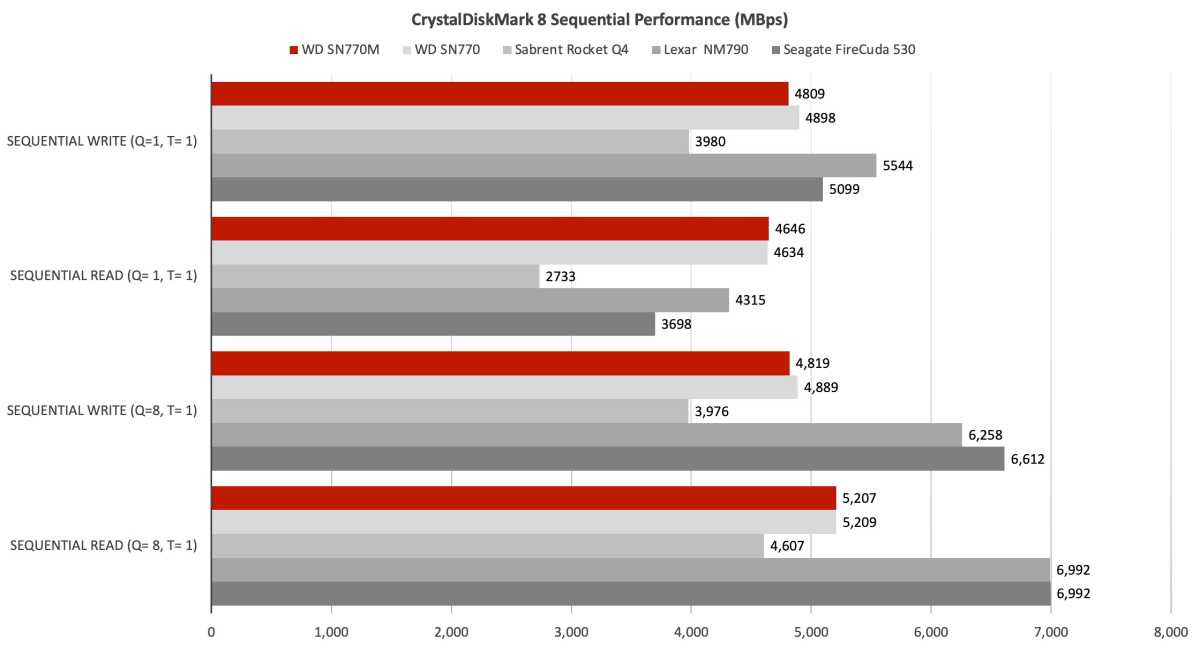
WD Black SN770M’s CrystalDiskMark sequential performance
proved almost identical to the SN770’s.Jon L. Jacobi
The SN770M and the SN770 were again neck and neck in CrystalDiskMark 8’s 4K tests, with the exception of the 32-queue read where the older SN770 pulled ahead.
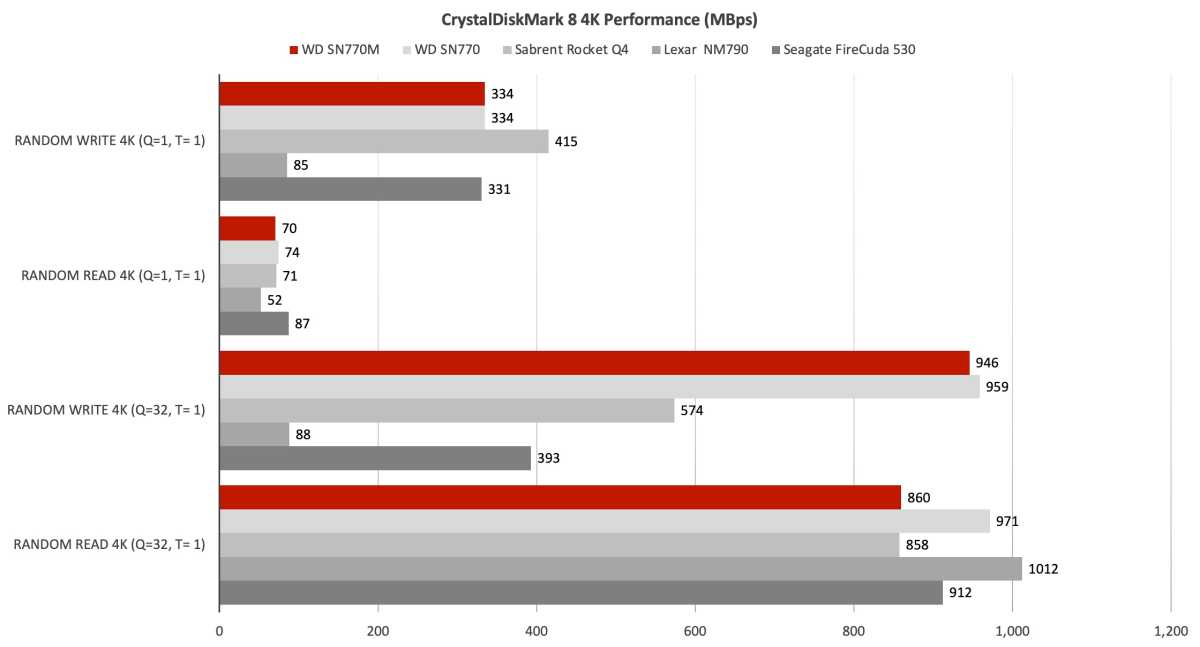
WD Black SN770M’s 4K performance is quite good for the class, and only fell off its sibling’s times in the 32-queue read test.
Jon L. Jacobi
I don’t normally include AS SSD 2.0 results as they tend to merely re-state CrystalDiskMark’s. However, the discrepancies between the two WD drives in the 4K tests were too interesting to omit. And yes, the Lexar NM790 continued its rather abysmal performance with 4K files.

WD Black SN770M and SN770, with each drive spanking the other in one test.
Jon L. Jacobi
When it came to our real-world 48GB transfers, the SN770M was almost as fast as its SN770 sibling. The Lexar NM790, though a 98-pound weakling in 4K tests, really shines in this one.
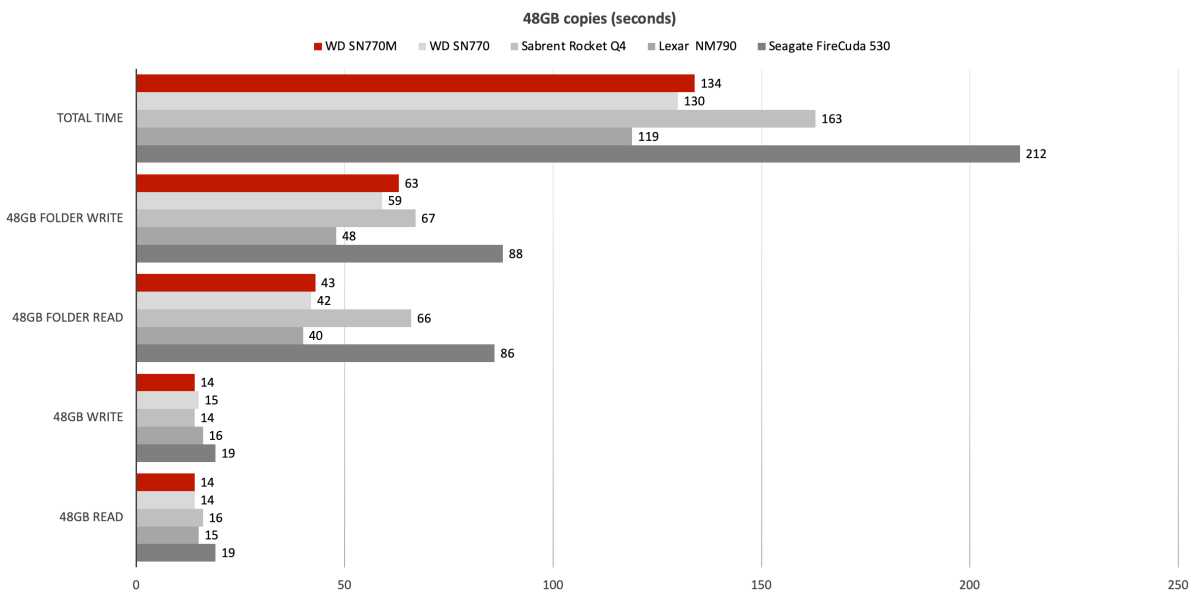
WD Black SN770M in our 48GB transfers.
Jon L. Jacobi
When it came to our 450GB single file write, the SN770M came up aces. The SN770 not so much, but that’s largely because, again, the unit we tested was a 1TB drive that ran out of secondary cache at around the 375GB mark. Again, the NM790 really shines in continuous large file writes.
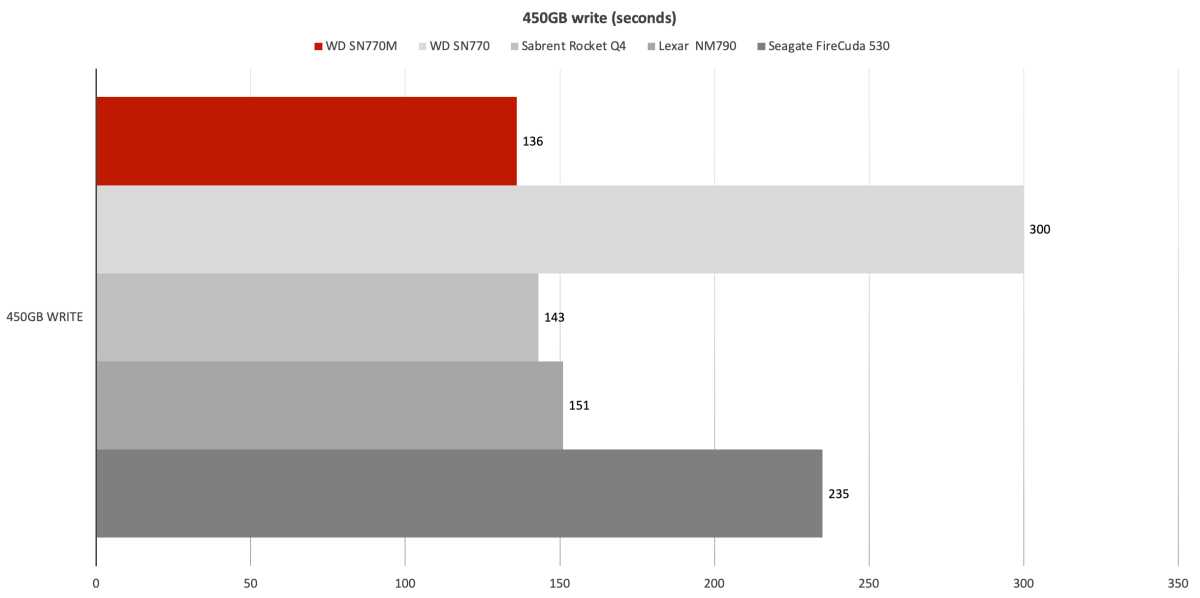
WD Black SN770M was 2TB and the older SN700 was 1TB, it didn’t run out of secondary cache and turned in an excellent 450GB write performance. Note that the SN770M will slow down significantly off cache.
Jon L. Jacobi
To complete the secondary cache discussion, below you’ll see that the SN770M also drops to around 300MBps (writing natively as TLC) once it runs out of secondary cache. Neither of the WDs is the SSD you want for very large data writes on a regular basis.
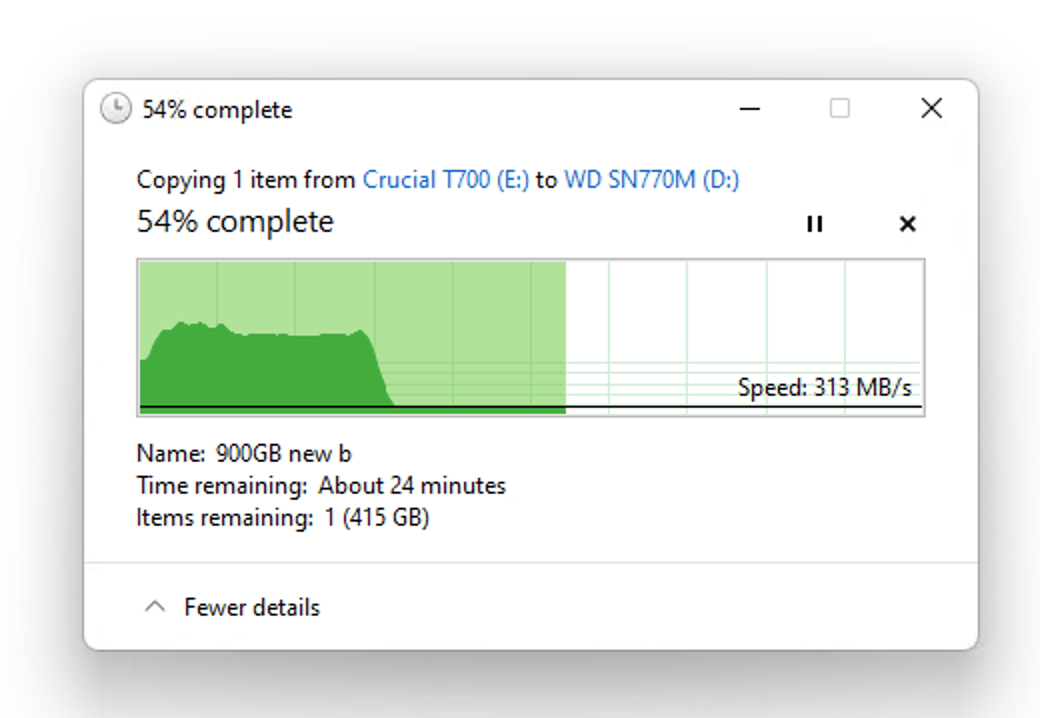
SATA-like write performance when a drive ran out of secondary cache was once the story with all SSDs; however, some newer drives with faster NAND such as the Lexar NM790 drop only to 700MBps to 1.5GBps when writing natively– i.e., writing the full three-bits.
Should you buy the WD Black SN770M?
If you’re looking for a fast SSD with 2TB of capacity for your Steam Deck or other device that accepts only 2230 form factor SSDs, then the WD SN770M is as good as it gets. Beyond that, you can get more for less with a standard SSD.
How we test
Internal drive tests currently utilize Windows 11, 64-bit running on an X790 (PCIe 4.0/5.0) motherboard/i5-12400 CPU combo with two Kingston Fury 32GB DDR5 4800MHz modules (64GB of memory total). Both 20Gbps USB and Thunderbolt 4 are integrated to the back panel and Intel CPU/GPU graphics are used. The 48GB transfer tests utilize an ImDisk RAM disk taking up 58GB of the 64GB of total memory. The 450GB file is transferred from a 2TB Samsung 990 Pro which also runs the OS.
Each test is performed on a newly formatted and TRIM’d drive so the results are optimal. Note that in normal use, as a drive fills up, performance may decrease due to less NAND for secondary caching, as well as other factors. This is less of a factor with the current crop of SSDs with their far faster NAND.
Caveat: The performance numbers shown apply only to the drive we were shipped and to the capacity tested. SSD performance can and will vary by capacity due to more or fewer chips to shotgun reads/writes across and the amount of NAND available for secondary caching. Vendors also occasionally swap components. If you ever notice a large discrepancy between the performance you experience and that which we report, by all means, let us know.






